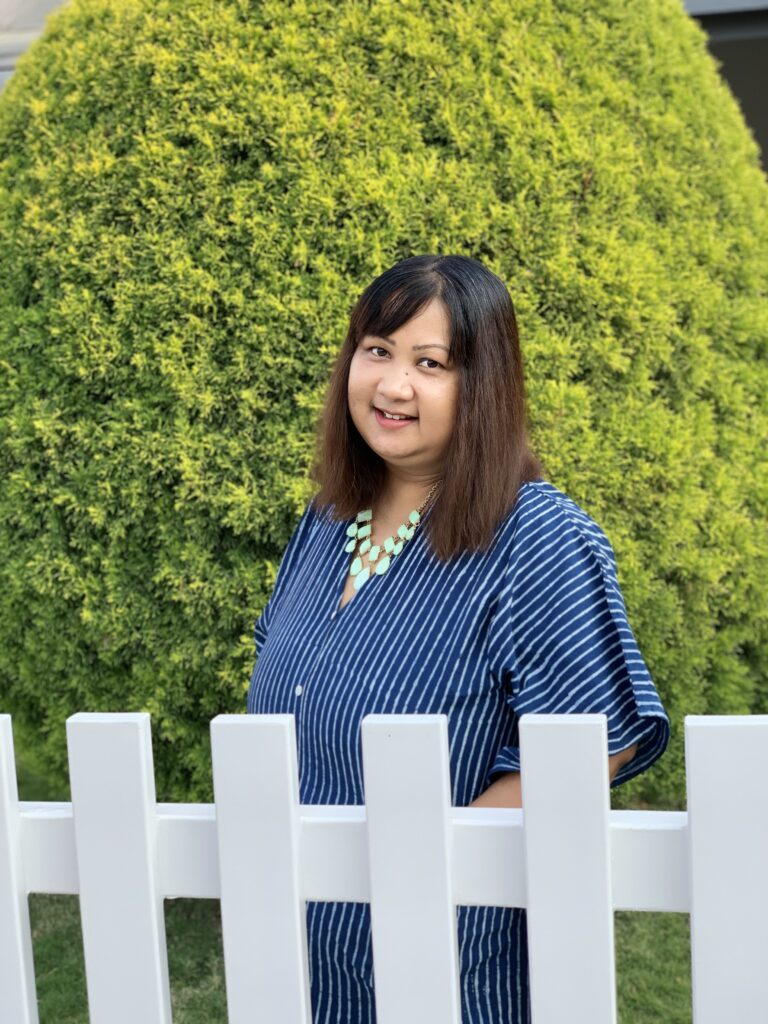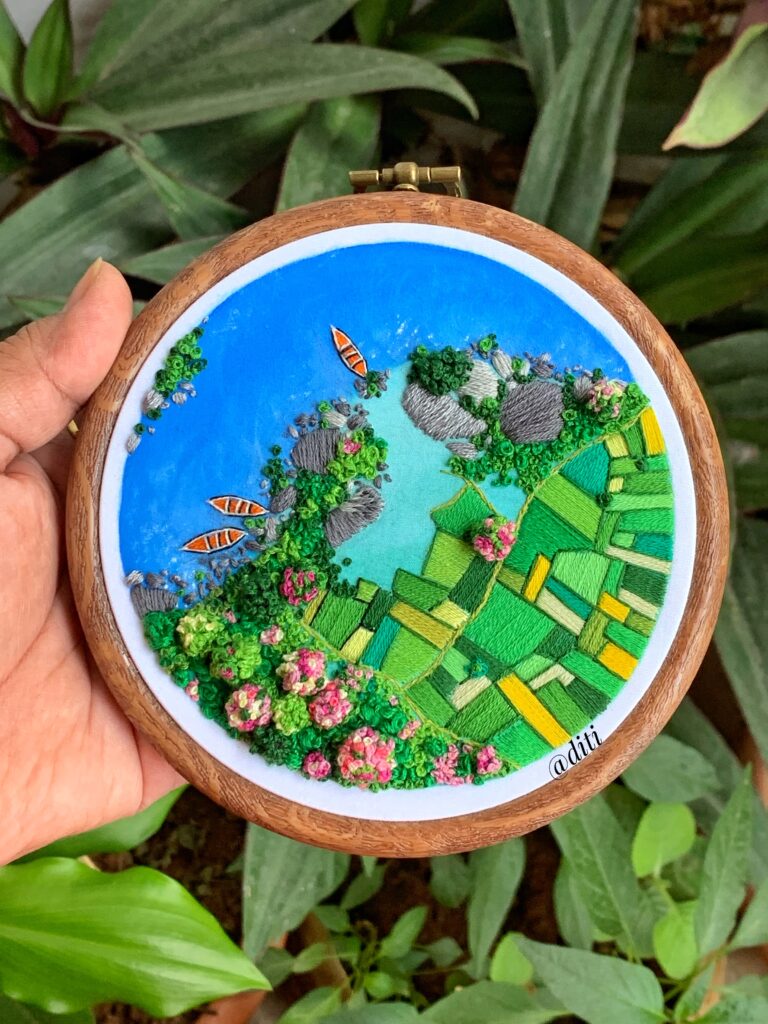An Aerial View of the North East in Embroidered Threads
This artist stitches her visions of the heritage of India’s North East into sustainable embroidered art

Stitching and embroidery have been around for thousands of years. It is unhurried, captivating and even meditative to make something with your hands. Sometimes it’s hard to believe that an exquisite piece of art can be made from something as simple as hoops, thread, needles, fabric and scissors. Diti Baruah turned to this healing art when the pandemic took her away from her corporate career, and she used the opportunity to reconnect with the art of sewing and with the landscapes and heritage of her home in the North East.
Aerial embroidery is broadly defined as embroidery which depicts views as seen from above. Diti Baruah’s aerial embroidery mirrors the beauty of India’s North East. From French knots to arches, the crafter uses basic and advanced techniques using variegated thread to create texture in her art on the small canvas, giving embroidered landscapes more depth and making them look three-dimensional.
Her inspiration comes from the landscapes around her. North East India is one of the most earthquake prone places in the world. Chandubi Lake in Assam, Baruah’s home state, is believed to have formed after a massive earthquake when the forest sank to give way to a new water mass as a lake. The lake has become a popular destination for local migratory birds.

In an embroidery piece called Chandubi Lake, Baruah has used dark blue fabric to contrast with the green French knot leaves. The blue boat adds charm to this lively scene, as the hovering clouds make one feel like one is flying above the lake.
Diti doesn’t have a planned list of places she plans to depict in her art, but she creates works based on places she knows but has never heard of from people outside the Northeast.
“I do what I love!” says the aerial embroidery artist. Baruah mostly uses a french knot style of embroidery as well as a mixture of materials like yarns, transparent material, felt, and so on to create 3D perspective views.
“I have always had an artistic inclination, and embroidery used to be an enjoyable hobby during school days.” The artist adds that her hobby had remained inactive until she realised it could create wonders.
 Embroidery painting captures the beauty of Dibru-Saikhowa National Park, Dibrugarh, Assam
Embroidery painting captures the beauty of Dibru-Saikhowa National Park, Dibrugarh, AssamBaruah taught architecture to students before the pandemic. She explains that she likes to mentor young minds and has always been into academics. “I think I’m still the same person but a little wiser and more confident now as my embroidery artwork gave me wings to fly instead of holding me back,” she explains.
With her academic background, Baruah had less time to focus on or explore new avenues. Then, during the pandemic, she had no choice but to quit her job to be with her family, who needed her at home. That was the most significant decision she had ever made. “I was not ready yet and it scared me. I took the leap. I overcame my fear of what others will think and followed what I thought was right.” The Bengaluru-based artist says that she is a happier person now.

Breaking the Embroidery Mould
Diti was always interested in design. She discovered that it was a new medium of expression for her. Many of the things we turn to in our lives are things we picked up when we were younger.
The artist shares that she has always been thankful for her growing-up days as she saw the reality of living in Assam and travelling to other places because of higher education or a job. “I chose a profession that reflected my experiences. During the rainy season, we had to wade through knee-depth water to get to school. I realised it wasn’t meant to be fun when I grew up.” She realised that citizens had to deal with flooding because of a lack of good urban planning. Her postgraduate specialisation was city planning. This experience helped shape her as a person. “I don’t know who I will be in the future, but mundane daily life anecdotes will remain a part of me.”
She thinks that she was always an artist. “I see art as a medium of expression and find it very meditative, and I can say it is a passion that brings so much joy and peace to my art admirers and me,” she adds.
But what made her choose aerial embroidery? “My own life experiences and how the pandemic transformed me have been something which led to the path. My background in architecture, city planning & GIS helps me visualise all my 3D artwork,” she adds.

Diti is not someone who chases the spotlight. What has this artistic journey done for her?
“I create my artwork for a purpose and am yet to reach a larger audience across the globe. I don’t want fame for this purpose, but my work should speak for me. My artistic journey has been filled with gratitude, love, and admiration. My artwork reflects a lot of love and passion, which is what my work is all about. Whatever we do should be done with passion and love. That matters!” she adds.
What is she doing to stay sane? Many of us get consumed by what we think is success, but the journey also has failures. “Since I was a kid, I have seen and met many people from different aspects of life.” She says her life experiences have taught her to be grounded and move ahead with her passion.
What gives her hope? In one of her interviews, she said she wants to create awareness about the North East through her art. When people look at my artwork and say how happy it makes them! That gives me a lot of hope to look forward and create more.” she concludes. Looking ahead to her next creative project, while looking back at the beauty of her home landscapes, Baruah is poised to bring needle to fabric and take us into new territories of colour and peace.
Some exquisite pieces of aerial embroidery from different parts of the world